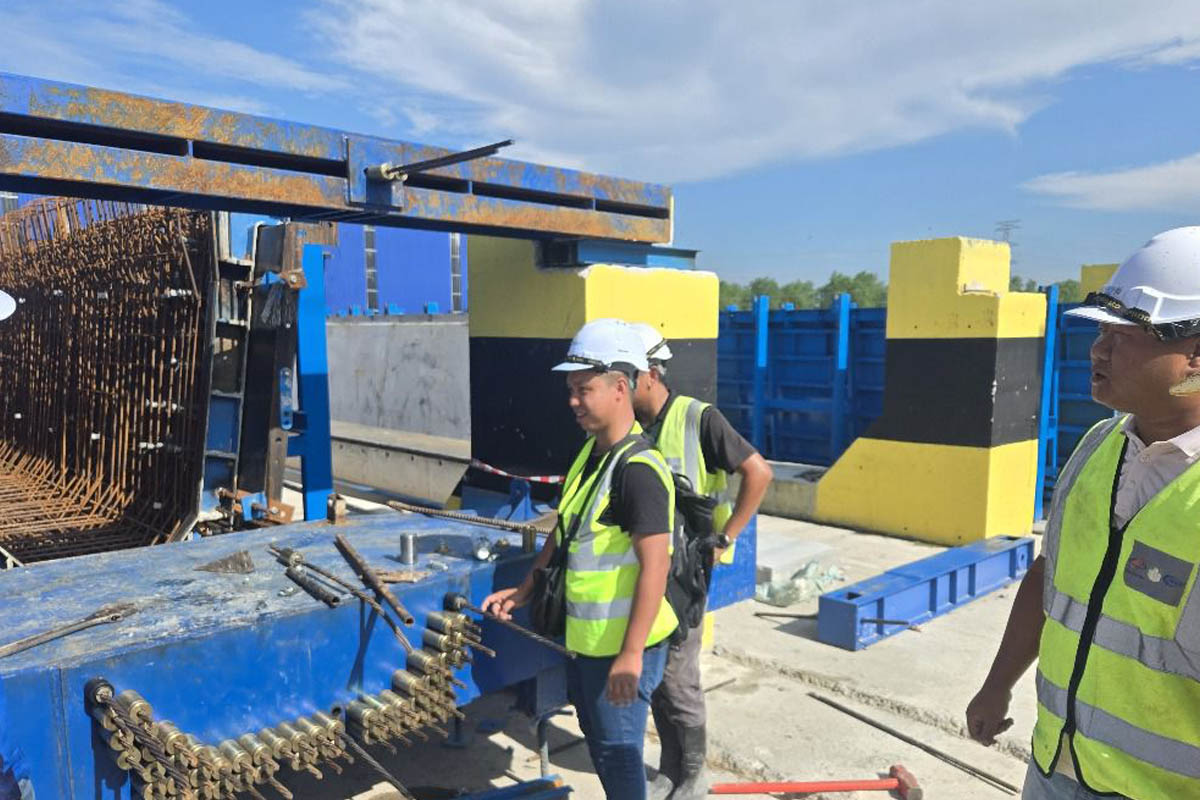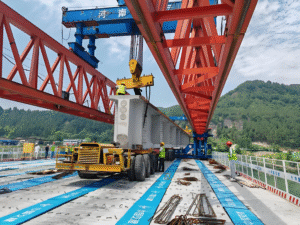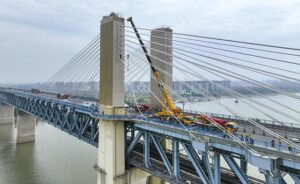In the world of heavy construction, civil engineering, and infrastructure maintenance, precision and power are non-negotiable. Structures like bridges, skyscrapers, and dams rely on an invisible skeleton of high-strength steel tendons and cables to bear immense loads. The integrity of these structures hinges on the precise tensioning of these tendons, a task that falls to some of the most robust and reliable tools in engineering: hydraulic stressing jacks.
Among these, the POLAR 25 Ton Hydraulic Stressing Mono Jack stands out as a workhorse of precision and power. But what exactly is it, how does it work, and why is it so critical to modern construction? This deep dive will explore the inner workings, applications, and undeniable importance of this essential piece of post-tensioning equipment.
Understanding the “Why”: The Critical Role of Post-Tensioning
Before we dissect the jack itself, we must understand the problem it solves. Post-tensioning (PT) is a technique for reinforcing concrete that is stronger and more flexible than using traditional reinforced concrete alone.
-
Concrete’s Weakness: Concrete is incredibly strong in compression (resisting being squashed) but notoriously weak in tension (resisting being pulled apart). A simple concrete beam supported at both ends will sag under its own weight, creating tensile stresses on its bottom surface, leading to cracks and failure.
-
The Solution: High-strength steel tendons (cables or bars) are placed inside ducts or sleeves within the concrete formwork before it is poured. Once the concrete has cured to a specific strength, these tendons are pulled tight, or stressed, using a hydraulic jack. This process compresses the concrete, effectively pre-loading it against future tensile forces.
-
The Result: The concrete element becomes stronger, can span longer distances, and is more resistant to cracking and deflection. This is the fundamental principle behind prestressed concrete and post-tensioned concrete, used in everything from residential slabs to the world’s longest bridges.
This is where our hero, the POLAR 25 Ton Mono Jack, enters the story.
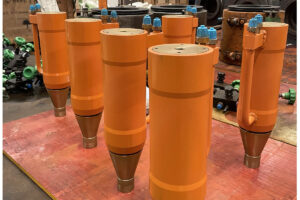
Deconstructing the Name: POLAR 25 Ton Hydraulic Stressing Mono Jack
-
POLAR: This is the brand name, often associated with reliability and performance in the construction tools and civil engineering supplies market.
-
25 Ton: This refers to the jack’s maximum capacity—its ability to exert 25 tons of force (approximately 250 kN or 55,000 lbs). This places it in a versatile category, powerful enough for many medium-duty applications without being overly cumbersome.
-
Hydraulic: This indicates its power source. It uses hydraulic fluid pressure to generate its immense force, a principle known as Pascal’s Law. A small force applied to a small area of fluid creates a proportionally larger force on a larger area.
-
Stressing: This is its primary function: to tension (or stress) post-tensioning tendons.
-
Mono Jack: “Mono” means single. This is a single-acting jack, meaning it uses hydraulic pressure to extend its piston (for stressing) and typically uses a spring return mechanism to retract it. This distinguishes it from more complex “double-acting” jacks.
A Component-by-Component Breakdown
To understand how it works, let’s look at its key components:
-
Main Cylinder: The robust, high-tensile steel body that contains the hydraulic fluid. It’s engineered to withstand extreme internal pressures without deformation.
-
Piston/Ram: The hardened steel shaft that extends out of the cylinder when hydraulic pressure is applied. This is the component that directly pushes against the anchorage system to tension the tendon.
-
Hydraulic Pump (Power Pack): While not part of the jack itself, the manual hydraulic pump or electric hydraulic pump is its inseparable partner. The pump is responsible for generating the fluid pressure that drives the jack. It consists of a reservoir for hydraulic oil, a hand lever or motor-driven actuator, and a precision valve system to control pressure.
-
Pressure Gauge: Mounted on the pump or the jack, this calibrated gauge displays the hydraulic pressure being applied. This is the key to precision. Since force is a product of pressure and area (F = P x A), the known internal area of the cylinder allows engineers to directly correlate the pressure reading on the gauge to the actual force (in kN or tons) being applied to the tendon.
-
Anchorage Gripping System: This is the intelligent part of the jack. It consists of:
-
Wedges: Hardened, serrated steel pieces that grip the tendon.
-
Chuck/Anchor: The housing that holds the wedges.
The genius of this system is its self-energizing design. As the jack pulls on the tendon, the wedges are drawn tighter into the chuck, increasing their grip. Once the desired tension is reached and the jack pressure is released, the wedges hold the tendon in place, transferring the stress permanently to the anchorage and, consequently, to the concrete.
-
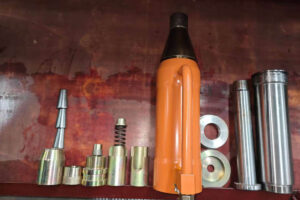
The Step-by-Step Stressing Process
Using the POLAR 25 Ton Jack is a methodical process performed by certified technicians:
-
Setup: After the concrete has cured, the tendon ends are exposed. The anchorage assembly (bearing plate and trumpet) is positioned correctly.
-
Jack Assembly: The mono jack is slid over the end of the tendon. The tendon threads through the center of the jack’s piston. The jack’s gripping wedges are carefully placed to hold the tendon.
-
Connection: The high-pressure hose from the hydraulic pump is connected to the jack’s inlet port.
-
Initial Seating: The pump operator begins applying pressure. The jack’s piston extends, pulling the tendon and taking up any slack. The wedges grip the tendon securely.
-
Stressing: The operator continues to pump, carefully watching the pressure gauge rise. The engineer or supervisor references a calibration chart specific to that jack and tendon type, which translates pressure into actual force (kN) and theoretical elongation (mm) of the tendon.
-
Reaching Final Force: The pumping continues until the pressure gauge indicates the required final stressing force (e.g., 80% of the tendon’s ultimate tensile strength). This force is held steady for a brief period as specified by the design.
-
Lock-Off and Release: While pressure is maintained, the technician uses a seating tool to gently tap the wedges, ensuring they are perfectly seated in the anchor. The hydraulic pressure is then slowly released via the pump’s release valve. The self-locking wedges hold the tendon in its stretched state. The force is now locked into the system.
-
Grouting: The final, crucial step is to pump cement grout into the duct that houses the tendon. This protects the steel from corrosion and ensures a full bond with the surrounding concrete.
Key Applications: Where is the POLAR 25 Ton Jack Used?
This jack’s versatility makes it a favorite across numerous industries:
-
Bridge Construction and Repair: For stressing deck slabs, girders, and cable stays.
-
Building Construction: In post-tension slabs for offices, parking garages, and high-rise buildings, allowing for longer spans and thinner slabs.
-
Dams and Retaining Walls: For massive horizontal and vertical stressing applications.
-
Nuclear Power Plants and Heavy Industrial Facilities: Where structural integrity and precision are paramount.
-
Precast Concrete Elements: Stressing beams and columns manufactured off-site.
Advantages of Using a Dedicated Stressing Jack
Why not just use any hydraulic jack? The answer lies in precision and safety.
-
Calibrated Accuracy: These jacks are calibrated against master gauges to ensure the force applied is exactly what is intended. Guesswork is eliminated. Reputable suppliers like Load Cell Central provide calibration services that are traceable to national standards.
-
Safety: Components are built with immense safety factors. The integrated pressure gauge and relief valves prevent accidental over-pressurization, which could lead to tendon failure or equipment damage—a serious safety hazard.
-
Efficiency: The system is designed for a smooth, controlled operation, speeding up the stressing process on large projects with hundreds of tendons.
-
Data Recording: For critical projects, the process is often documented, recording the final pressure and measured elongation of each tendon to verify it matches the theoretical calculation, ensuring quality assurance.
Maintenance and Safety: Non-Negotiable Practices
A tool this powerful demands respect. Key maintenance and safety protocols include:
-
Regular Calibration: The jack and pump gauge should be calibrated at least annually or after every 500 uses, as per manufacturer guidelines. The American Society for Civil Engineers (ASCE) provides guidelines on construction safety and equipment maintenance.
-
Visual Inspection: Check for hydraulic fluid leaks, damaged hoses, cracked welds, or deformed components before every use.
-
Clean Hydraulic Fluid: Contaminated fluid can damage precision valves and seals. Fluid should be kept clean and changed periodically.
-
Operator Training: Only trained and competent personnel should operate stressing equipment. They must understand the principles, the risks, and the emergency procedures.
-
Safe Zone: Never stand in front of or behind the jack during stressing. A tendon or component failure can release catastrophic amounts of stored energy.
Conclusion: The Unseen Force Behind Modern Infrastructure
The POLAR 25 Ton Hydraulic Stressing Mono Jack is far more than just a simple pump. It is a precision instrument, a marvel of hydraulic engineering, and a guardian of structural integrity. It translates theoretical engineering calculations into real-world, measurable force, literally shaping the skeleton of our modern world. From the bridge you cross on your morning commute to the office building you work in, the silent, immense strength of post-tensioned concrete—activated by tools like this jack—is what keeps them standing strong, safe, and resilient for decades to come.
Understanding its operation is to understand a fundamental chapter in the story of modern construction, where raw power is perfectly married to meticulous precision.


